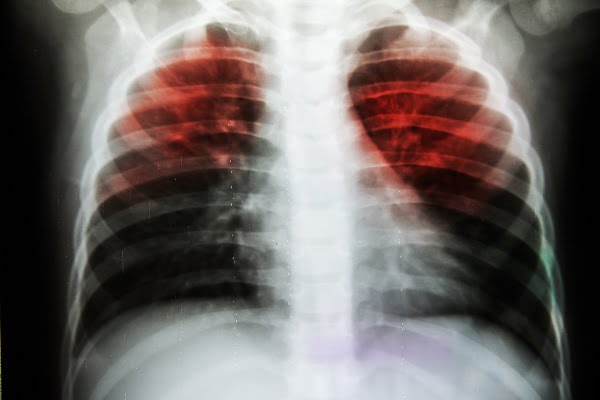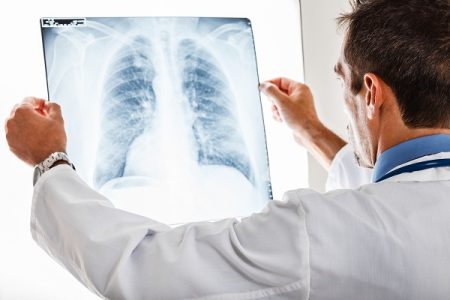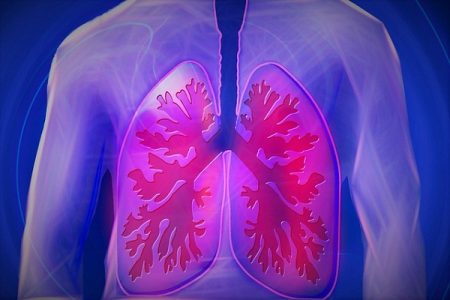What Is Tuberculosis?
- Updated on: Jul 9, 2024
- 5 min Read
- Published on Feb 28, 2020

Overview of tuberculosis
Tuberculosis, an infectious multisystem disease, is caused by Mycobacterium tuberculosis (M. tuberculosis). The disease affects pulmonary tract and lungs in 85% of cases.
The infection is generally latent i.e. it does not cause any visible symptom. About 10% of latent infection of this disease advances into an active condition. If left untreated, the condition can be fatal.
Symptoms of tuberculosis
A chronic cough with blood in sputum (hemoptysis) with fever, breathlessness (dyspnea), weight loss, chest pain and night sweat are the common symptoms of active tuberculosis.The signs and symptoms of tuberculosis can be difficult to diagnose as the symptoms overlap with other respiratory conditions.
There is a difference between being infected and having a clinically active disease. People with a latent condition of this disease do not spread it while the person with an active condition can. It spreads through air by the release of germs through a lung cough, spitting, singing, talking and sneezing by the affected person. If another person inhales these germs, chances of getting infection get higher. People who smoke and suffering from HIV/AIDS are more likely to get an active infection.
Read more about the symptoms of tuberculosis.
Tuberculosis diagnosis and treatment
Diagnosis of active tuberculosis is done with X-rays and examination of body fluids. However, the diagnosis of the latent condition is done by blood tests and Tuberculin skin test (TST). Early screening of people with high risk and treatment can help in the prevention.
Treatment of tuberculosis is done with the help of multiple antibiotics over a long period. There are some forms of tuberculosis that are resistant to one or more drugs. These are referred as Multi-drug resistant (MDR) strains. One or more drugs used for the treatment of tuberculosis, in such cases, are not effective against it.
Read more about diagnosis of tuberculosis.
Read more about treatment of tuberculosis.
Worldwide Scenario
Tuberculosis, according to World Health Organization (WHO) is the second most common cause of death worldwide after HIV/AIDS.
Tuberculosis is very common in developing countries. It is estimated that one-third of the world’s population is infected with tuberculosis and about 1.6 million people die every year because of this condition. Approximately, more than 90% death occurs in low and middle-income countries.
About 60% of total infected people worldwide reside in India, Nigeria, South Africa, Indonesia, China and Pakistan. The disease is highly contagious and persistent formation of hard gray-colored nodules called tubercles occurs in this condition.
In the year 2015, about 8.6 million cases of tuberculosis were reported and 1.8 million people died from it. However, the death rate because of tuberculosis has dropped about 41% since 1991.
Quick Facts about Tuberculosis
Following are some quick facts about this life-threatening condition:
- Mycobacterium Tuberculosis (M. tuberculosis), a rod-shaped bacterium is the causative agent of this disease.
- According to a study, untreated tuberculosis kills about half of infected people within five years of infection.
- The infection is categorized as latent and active.
- Active infection occurs in people with low body’s resistance or prolonged exposure.
- Any person may have the infection but it is not necessary that he/she is sick. Such people often work as “carrier” of disease.
- Tuberculosis is contagious disease and is transmitted from one person to another via air.
- The incubation period of this infection is typically a week but may vary from person to person.
- Fever, blood in cough, weight loss, fatigue (weakness) with chest pain is common symptoms of the disease.
- Body’s defense mechanism in most of the cases is able to tackle the infection. Only 10% of affected people develop an active infection.
- The condition may create chronic complications in lungs, kidney and liver that can be fatal.
- Treatment of tuberculosis often requires treatment with multiple antibiotics for one or more month.
- If antibiotic doesn’t work, it can be fatal.
- Inadequate treatment leads to multi-drug resistance of M. tuberculosis strains which is more difficult to treat.
- More than 80% of tuberculosis cases are reported in lungs while about 20% are reported in other organs like kidneys, spine, bones and lymph nodes.
- Vaccination against tuberculosis is available commercially.
What are the different types of tuberculosis?
On the basis of stage of infection, tuberculosis is categorized into following two types:
- Latent Tuberculosis
- Active Tuberculosis
Latent Tuberculosis
Latent tuberculosis is a condition in which the person has tuberculosis infection but the bacteria is inactive in the body. There are no obvious symptoms in such cases and the chest X-ray is normal.
The only way of diagnosing is tuberculin skin test (TST) and Interferon-Gamma Release Assay (IGRA). Latent tuberculosis is not contagious but chances of it to advance into active condition are quite high. The risk is increased in the cases of other illness such as HIV infections and other medications that slow down the immune response.
Active Tuberculosis
Active tuberculosis is a condition in which tuberculosis bacteria divide rapidly and infect other organs too. If lungs get infected with active tuberculosis, the infection spreads quickly to other body parts too. The condition causes varied symptoms of cough, chest pain, bloodstained sputum, weakness and fever. The person suffering from active tuberculosis in lungs can spread it to other by air. Since the active form is contagious, the person needs to be tested and treated by multi-drug treatment.
In addition to above discussed types, tuberculosis is categorized on the basis of “site of infection”. Following are the types:
- Pulmonary Tuberculosis
- Extra-pulmonary Tuberculosis
Pulmonary Tuberculosis
Pulmonary tuberculosis has lungs as its main site of infection. It involves various parts of lungs and named accordingly. Following are the types of pulmonary tuberculosis:
- Primary Tuberculosis Pneumonia
- Tuberculosis Pleurisy
- Miliary Tuberculosis
- Laryngeal Tuberculosis
- Cavitary Tuberculosis
Primary Tuberculosis Pneumonia
- uncommon type of tuberculosis
- very infectious
- causes pneumonia
- high fever with cough
- often in young kids, old people and HIV-patients
Tuberculosis Pleurisy
- incubation period is quite small (develops soon after infection)
- granuloma rupture in cavity between lungs and chest wall (pleural space)
- fluid pooling in the pleural space
- increase in fluid during infection causing compression of lungs
- low grade fever
- fever, night sweats, cough and weight loss
- pus in pleural space
- blood in sputum
Miliary Tuberculosis
- appearance of small nodules
- occurs soon after infection
- high fever and cough (slow illness and weakness)
- can be fatal
- often in children and HIV-patients
Laryngeal Tuberculosis
- infection of larynx
- extremely infectious
- pain in larynx and high fever
Cavitary Tuberculosis
- highly infectious
- develops in upper lobes of lungs (oxygenated area of lungs)
- formation of cavities and enlarged air spaces
- cannot occur soon after infection
Extra-pulmonary Tuberculosis
Infection of tuberculosis can develop in parts other than lungs and respiratory system. It generally occurs in patients whose immune system is compromised or suppressed.
Generally, HIV/AIDS patients and patients taking immune-suppressants are likely to get infected.
Following are the types:
- Tuberculosis Meningitis
- Adrenal Tuberculosis
- Tuberculosis Pericarditis
- Tuberculosis Peritonitis
- Lymph Node Disease
- Osteal Tuberculosis
- Renal Tuberculosis
Tuberculosis Meningitis
- infection of meninges (membrane surrounding brain and spinal cord)
- can lead to brain tumor
- strokes
- headache, sleepiness and coma
- permanent damage to brain and death
Adrenal Tuberculosis
- infection in adrenal gland
- malfunctioning of adrenal gland and adrenal deficiency
- decrease in steroid production
- weakness and fainting
Tuberculosis Pericarditis
- infection in pericardium (outer lining that surrounds heart)
- fluid buildup in the space between heat and pericardium
- discomfort and reduced heartbeat
- can be fatal
Tuberculosis Peritonitis
- infection in outer lining of intestines and abdominal wall
- fluid pooling
- abdominal pain and discomfort
- low grade fever
Lymph Node Disease
- infection in lymph nodes
- lymph nodes contain macrophages that seize bacteria
- uncontrolled replication of M. tuberculosis
- enlarged lymph nodes
- can develop from lymph nodes to skin
Osteal Tuberculosis
- infection in bones
- can occur in spines too
- leads to compression of spine and back deformity
- repeated fractures
Renal Tuberculosis
- infection in urinary system that can spread to reproductive system
- causes asymptomatic pyuria (white blood cells in urine)
- inflammation of epididymis (in males)












